We are now at a “HIGH” virus wastewater level for COVID in the United States according to the CDC, down from “VERY HIGH” last week. Cases are on the decline, but we are still at about 900,000 new COVID cases each day. Fortunately, the number of COVID cases in Emergency Departments are decreasing, as are hospitalizations and deaths. JN.1 now represents over 93% of COVID cases in the U.S. But, what lies ahead?
JP Weiland predicts high numbers of cases over the next few weeks and then a rapid decrease in cases through March. In South Africa however, 8 cases of a new highly mutated variant called BA.2.87 has piqued the interest and watchful eyes of Twitter variant hunters. So far, there are very few cases, so BA.2.87 may be nothing, or it may mutate to become more of a threat. Time will tell and it is on scientists' radar.
A new eye-opening study reported in PNAS shows that when the SARS-CoV-2 virus is destroyed, its “zombie” viral fragments can spontaneously join together with double-stranded RNA, causing proinflammatory supramolecular complexes (XenoAMP-dsRNA) which then can overstimulate the immune system, triggering widespread inflammation including cytokine storm and blood clotting. "Compared to relatively harmless coronaviruses that cause the common cold, the team found that SARS-CoV-2 harbors many more combinations of fragments that can better mimic human immune peptides." This concerns me that SARS-CoV-2 fragments are able to regroup into proinflammatory supramolecular complexes as studies have shown SARS-2 viral particles in the tonsils of children, in the skull’s bone marrow long after a COVID infection has resolved, and in many other places throughout the body.
A study in Nature magazine this week shows that prior infection with coronavirus OC43 (a type of common cold virus) is protective against COVID infection because of cross reactive T cells to both OC43 and SARS-CoV-2. Prior infection with the common cold coronavirus OC43 potentially could be why some people in a household are protected against a COVID infection, even when other family members have COVID.
I was surprised by an article in JAMA this week that showed that there is a fairly high fit-failure of some common types of N95 respirator masks. In a cohort study of Emergency Department health care workers who reused their N95 respirator masks, fit failure occurred in 39% of masks overall after one shift. Some N95 respirators were worse than others. There was 26% fit failure with Dome N95 respirator masks, 28% fit failure for duckbill N95 respirator masks and a whopping 61% fit failure with Trifold N95 respirator masks including the popular 3M Aura masks. It looks like it may not be wise to reuse N95 respirator masks over and over again especially in high risk places like the Emergency Department where there could be high viral levels.
This week in Frontiers of Neuroscience, 10 important studies from the last several years on SARS-CoV-2 in neurodegenerative diseases were reviewed looking at the effects of COVID on the brain.
Pediatrics
This week, there were several studies reporting on how SARS-CoV-2 can affect children. During the pandemic, there has been an increase in diabetes and diabetic ketoacidosis (DKA) in kids. The first study shows that direct damage from the virus, metabolic dysfunction related to SARS-2 infection and the body’s immune responses strongly correlate to new-onset diabetes in children after a COVID infection.
A second study shows that maternal COVID infection during pregnancy significantly increases respiratory distress risk in full-term babies even when the baby does not have a COVID infection itself. The study found inflammation in the baby’s lungs and dysfunction of the cilia that line the baby’s airways despite them not having the actual infection. Maternal COVID vaccination reduced the risk of neonatal respiratory distress in term infants.
The CLoCk study from the UK reported on Long COVID in non-hospitalised children and young people (CYP). They found that although severe Long COVID can be completely debilitating in children and young people, Long COVID in these age groups is rare and most children improve over time. Predictors of Long COVID in children and teens were older age, female sex, minority ethnicity and impaired pre-COVID health. Vaccines prevented acute Covid-19 infections and therefore Long COVID, but there was no evidence that vaccination could improve symptoms in a child who already had Long COVID. However, vaccination can help prevent reinfections with COVID.
Vaccines
There was surprisingly good news about the updated XBB.1.5 COVID vaccine that is being offered now. In general, the goal of vaccines is to decrease hospitalizations and severe outcomes from infections. But, data from the CDC shows that in addition to protecting 80% against hospitalization and severe COVID outcomes, the updated XBB.1.5 COVID vaccine also protects 54% against symptomatic COVID infection as well. In addition, the benefits of this vaccine may not be waning as quickly as some COVID vaccines have in the past, but it is still early to tell.
An interesting human antibody called FD20 was discovered from an original (Wuhan-type) SARS-CoV-2 infection. FD20 can neutralize the original COVID virus, but it also neutralizes Omicron infections. Scientists examined different parts of FD20 to understand why it protects against multiple COVID variants. FD20 could potentially be a treatment for variants of concern now and in the future.
Long COVID
I was talking with a colleague this week, and she said that several of her patients have been complaining of new difficulties finding words or other cognitive issues, but they have chalked it up to “getting older”. As she said, people do not usually have these kinds of changes in memory from turning one year older. Many of these people may have Long COVID. Even in millennial forums on social media, people talk about having a lot of fatigue or cognitive slowing after they had COVID. Yet, people do not realize that they should try to protect themselves from reinfection with another COVID infection because it could make their Long COVID worse. The public health messaging about the risks of repeat COVID infections has not been great.
Senator Bernie Sanders wrote an article this week entitled “US is turning its back on Long COVID. We'll pay the price if we don't act.” This came out a week after the Senate Committee on Health, Education, Labor and Pensions (HELP) meeting on Long COVID where people suffering from Long COVID and researchers told the senators about what Long COVID is and the risks that it poses.
As Bernie said, “These symptoms are not minor inconveniences. They are debilitating conditions that affect the ability of people to work, care for their families and live full lives.” He talked about how anyone can get Long COVID and that there is an increased risk of Long COVID with each additional COVID reinfection. Long COVID is a complex disease that often requires visits to multiple specialists. Senator Sanders discussed how we should better educate healthcare professionals on what Long COVID is and we should work to find treatments. “In my view, we must do everything in our power to improve the diagnosis and treatment of long COVID-19.”
An article from Drs. Kell and Pretorius et al. reviewed the role of fibrinaloid microclots in POTS (Postural Orthostatic Tachycardia Syndrome) with a focus on Long COVID. Fibrinaloid microclots contain amyloid protein and may block the flow of oxygen through tiny blood vessels in the body’s tissues. This, in turn, can trigger the heart to beat faster as it tries to pump more oxygen to the tissues.
Regarding exercise and Long COVID, a multinational group of Long COVID researchers wrote a response in Nature magazine to recent recommendations from Fedorowski et al. 's paper entitled “Cardiovascular autonomic dysfunction in post-COVID-19 syndrome”. The Long COVID researchers replied that graded exercise therapy should not be recommended for patients with post-exertional malaise. I agree. A recent study from Rob Wust’s lab showed that in people with Long COVID who have post-exertional malaise, exercise can cause muscle damage and even necrosis (death of muscle cells) as well as changes in muscle fibers which make them fatigue more easily. Exercise should not be recommended for people with Long COVID, ME/CFS-type, as it can cause them severe muscle damage.
COVID and the Eye
SARS-CoV-2 infection can cause inflammation of the endothelial cells that line blood vessels and a proclotting state which can cause micro-thrombosis and retinal thickening. Prior studies have shown that COVID infections can damage vision with central retinal artery/vein occlusion and acute macular neuroretinopathy.
In a new study, Mendelian Randomization (MR) was used to show that the SARS-CoV-2 virus can cause increased thickness of the inner retina. Patients hospitalized with acute COVID infections did not have retinal thickening however. Medications such as steroids and anticoagulants given to hospitalized COVID patients to help their lungs, may have also protected their eyes.
The authors suggest that some people may have Long COVID of the eyes after mild COVID infections. They should be followed with eye exams to make sure that they do not develop retinopathy which could lead to vision loss.
A new article in The Mirror UK reviewed a study from 2023 that showed that 59% of Long COVID patients had ‘silent’ organ damage to one organ system a year after initial symptoms and 29% had multi-organ impairment. I found this quote from Dr. Rae Duncan enlightening:
"Dr Rae Duncan from Newcastle Hospitals NHS Foundation Trust warned: "Covid is a spectrum and Long Covid is only one end of that. It's never been just a cold. The more times you're infected, the higher your cardiovascular risk, neurological, and endocrine risk. These can all result in life-altering conditions. Some people may have hidden organ damage, which doesn't show any symptoms, meaning they don't know it's happening. It needs more research but it's very worrying."
A preprint in BioRxiV describes a mouse model for Long COVID with neurologic symptoms. SARS-2 infection in K18-hACE2 mice was found to mirror clinical symptoms in Long COVID patients and may be useful for evaluating new vaccines and treatments against SARS-CoV-2 variants.
Sawyer Blatz of the Long COVID Moonshot posted about when we should expect results from some important Long COVID clinical trials:
Early 2024- Ampligen, Temelimab, Efgartigimod trials
Mid 2024- mesenchymal stem cells, Paxlovid, Low Dose Naltrexone trials
Late 2024- AER002 monoclonal antibody, Ensitrelvir, BC007 trials
Emily Johnson posted about the 470 studies on Long COVID in the United States and abroad that can be found at https://clinicaltrials.gov/search?cond=Long%20COVID. Many studies are observational. Others are trialing treatments for Long COVID although we currently do not have an FDA approved treatment for Long COVID.
In non-COVID news, there were several really interesting reports this week. Using head-mounted camera recordings from one baby from age 6 months to 2 years, scientists trained an artificial intelligence (A.I.) neural network about how humans learn language.
This week, Dr. Uche Blackstock’s new book LEGACY: A Black Physician Reckons with Racism in Medicine was released and became a New York Times instant bestseller. She also wrote an essay in the Washington Post entitled “How tens of thousands of Black U.S. doctors simply vanished” which is adapted from her book. I highly recommend it.
Measles outbreaks have increased 45-fold in Europe and at least 8,500 American schools are at risk of similar measles outbreaks where less than 95% of students are vaccinated.
Alzheimer’s disease may be transmissible, like an infection, as seen by an increase in Alzheimer's dementia in people who received growth hormone as children from the pituitary glands of cadavers. The authors suggest that the amyloid protein present in the growth hormone preparations ‘seeded’ the brains and caused early-onset dementia decades later.
A new study from Stanford may have discovered why women are at greater risk of autoimmune diseases like rheumatoid arthritis and lupus. Women have two X chromosomes (XX) and men have one X and one Y chromosome (XY). In women, the genes of one of the X chromosomes is turned off so that the correct levels of proteins are made from the chromosome pair. But it is the way that it is turned off that can lead to autoimmune antibodies being made.
Autoimmune diseases are four times more common in females. In females, the Xist (pronounced “Exist”) RNA protein (RNP) complex wraps itself around one of the X chromosomes to turn off its genes. Scientists were able to make transgenic male mice to produce Xist RNP, which caused the male mice to make autoantibodies causing autoimmune disease. Therefore, the Xist RNP inactivation of one of the X chromosomes in females appears to be a mechanism for increased risk of autoimmune diseases.
Finally, the James Webb Space Telescope recently captured extremely detailed images of 19 spiral galaxies and the millions of stars within them.
Have a good rest of your weekend,
Ruth Ann Crystal MD
COVID news:
US Variant tracker: https://covid.cdc.gov/covid-data-tracker/#variant-proportions
Variants in locations around the globe: https://outbreak.info/
CDC COVID data tracker: https://covid.cdc.gov/covid-data-tracker/index.html#datatracker-home
CDC COVID Hospitalizations (blue) and Emergency Room (orange) visits tracker: https://covid.cdc.gov/covid-data-tracker/index.html#trends_weeklyhospitaladmissions_7dayeddiagnosed_00
Weekly ED visits for respiratory illnesses, by age and disease: https://www.cdc.gov/ncird/surveillance/respiratory-illnesses/index.html
Emergency Dept visits:
US Wastewater Monitoring:
CDC wastewater reporting: https://www.cdc.gov/nwss/rv/COVID19-nationaltrend.html
CDC wastewater map: https://www.cdc.gov/nwss/rv/COVID19-currentlevels.html
Biobot: https://biobot.io/data/
National SARS-CoV-2 data from Sarah Anne Willette: https://iowacovid19tracker.org/
Wastewater SCAN: https://data.wastewaterscan.org/
California statewide view https://buff.ly/3YObiul
Sewer Coronavirus Alert Network (SCAN) project by Stanford University:
Santa Clara County wastewater: https://covid19.sccgov.org/dashboard-wastewater
CDC Respiratory vaccination trends: https://www.cdc.gov/respiratory-viruses/data-research/dashboard/vaccination-trends-adults.html
JP Weiland: https://twitter.com/JPWeiland
Michael Hoerger modeling: http://pmc19.com/data/
Variants
BA.2.87 was reported from in South Africa per Tulio de Oliveira. It has more than 30 spike mutations and many more in the rest of its genome. So far it has not caused a significant number of cases, but is being watched by variant hunters.
________
General COVID news and Acute COVID infection info
1/29/24 UCLA Newsroom: Viral protein fragments may unlock mystery behind serious COVID-19 outcomes https://buff.ly/42paMod
When the SARS-CoV-2 virus is destroyed, its “zombie” viral fragments can spontaneously join together with double-strand RNA, which then overstimulates the immune system, triggering widespread inflammation including cytokine storm and blood clotting.
"Compared to relatively harmless coronaviruses that cause the common cold, the team found that SARS-CoV-2 harbors many more combinations of fragments that can better mimic human immune peptides."
2/2/24 PNAS (UCLA): Viral afterlife: SARS-CoV-2 as a reservoir of immunomimetic peptides that reassemble into proinflammatory supramolecular complexes https://t.co/zPZCJc7pWJ
Some coronaviruses cause the common cold and others like SARS-CoV-2 can cause pandemics.
Viral fragments from SARS-CoV-2 virus can reassemble into XenoAMPs that then combine with dsRNA into proinflammatory complexes (XenoAMP-dsRNA) that cause prolonged inflammatory responses in the body that can damage healthy, uninfected cells. This does not happen with common cold coronaviruses.
The XenoAMP-dsRNA complexes look like PAMPs to the body and stimulate the immune system for inflammation.
1/26/24 JAMA: Fit Test Failure During N95 Respirator Reuse and Extended Use https://buff.ly/3u2J5VN
In this cohort study of ED HCWs practicing N95 reuse, fit failure occurred in 38.7% of masks after 1 shift over all with:
26% fit failure with Dome N95 respirator mask
28% fit failure with Duckbill N95 respirator mask
61% fit failure with Trifold N95 respirator mask (like Aura by 3M)
—----
1/26/24 Nature: Human coronavirus OC43-elicited CD4+ T cells protect against SARS-CoV-2 in HLA transgenic mice https://buff.ly/42mODao
Prior infection with coronavirus OC43 (a type of common cold virus) is protective against COVID infection because of cross reactive T cells to both OC43 and SARS-CoV-2.
11/23/23 Protein Science (via @vipintukur): Molecular interactions between perlecan LG3 and the SARS‐CoV‐2 spike protein receptor binding domain https://buff.ly/3SDt1TK
Perlecan LG3 binds the SARS-CoV-2 spike protein RBD, which may enhance RBD-ACE2 interactions which allows the virus to enter and infect a human cell.
Blocking Perlecan LG3 could be a potential therapy against COVID infection.
1/16/24 Frontiers in Neuroscience, Editorial: SARS-CoV-2 in Neurodegenerative Diseases https://buff.ly/47Wbp9X
10 articles reviewed from the last several years:
1. Brain Cortical Alterations in COVID-19 Patients with Neurological Symptoms (Sanabria-Diaz et al.).
Studies examining cortical alterations in COVID-19 patients with neurological symptoms reveal the diverse range of manifestations the virus can induce within the brain. From changes in connectivity to cognitive impairments, understanding these alterations is crucial for guiding clinical interventions.
2. Risk and Prognostic Factors for SARS-CoV-2 Infection in a Spanish Multiple Sclerosis Population during the First 5 Waves (Pilo De La Fuente et al.).
The intersection of SARS-CoV-2 and multiple sclerosis in the Spanish population highlights the need to identify risk and prognostic factors. This knowledge is essential for tailoring prevention and treatment strategies in this specific cohort.
3. SARS-CoV-2, Long COVID, Prion Disease, and Neurodegeneration (Zhao et al.).
The intricate relationship between SARS-CoV-2, long COVID, prion diseases, and neurodegeneration poses urgent questions. How does the virus influence prion pathways, and what are the implications for long-term neurodegeneration?
4. Late Neurological Consequences of SARS-CoV-2 Infection: New Challenges for the Neurologist (Korchut and Rejdak).
Understanding the late neurological consequences of SARS-CoV-2 infection presents novel challenges for neurologists. From persistent symptoms to cognitive issues, specialized attention and adaptive management strategies are required.
5. SARS-CoV-2-Specific Antibody Responses Following BNT162b2 Vaccination in Individuals with Multiple Sclerosis Receiving Different Disease-Modifying Treatments (Lambrianides et al.).
The variability in SARS-CoV-2-specific antibody responses post-BNT162b2 vaccination in multiple sclerosis patients prompts questions about the efficacy of diverse disease-modifying treatments.
6. Adamantanes for the Treatment of Neurodegenerative Diseases in the Presence of SARS-CoV-2 (Butterworth).
Exploring adamantanes as a potential treatment for neurodegenerative diseases in the context of SARS-CoV-2 underscores the need for innovative and multifaceted therapeutic strategies.
7. The Link between SARS-CoV-2-Related Microglial Reactivity and Astrocyte Pathology in the Inferior Olivary Nucleus (Madden et al.).
Investigating the connection between SARS-CoV-2-related microglial reactivity and astrocyte pathology in specific brain regions provides unique insights into the mechanisms behind neurological manifestations of the virus.
8. COVID-19: A Modern Trigger for Guillain-Barré Syndrome, Myasthenia Gravis, and Small Fiber Neuropathy (Gomez et al.).
The association between COVID-19 and neuromuscular syndromes raises questions about pathogenesis and necessitates heightened vigilance in affected patients.
9. Long-Lasting Neutralizing Antibodies and T Cell Response After the Third Dose of mRNA Anti-SARS-CoV-2 Vaccine in Multiple Sclerosis (Maglione et al.).
The persistence of neutralizing antibodies and T cell responses after the third dose of mRNA anti-SARS-CoV-2 vaccine underscores the importance of tailored vaccination strategies for individuals with multiple sclerosis.
10. The Determinants of COVID-Induced Brain Dysfunctions After SARS-CoV-2 Infection in Hospitalized Patients (Yasir et al.).
Identifying the determinants of COVID-induced brain dysfunctions after SARS-CoV-2 infection in hospitalized patients is crucial for enhancing care and rehabilitation.
Pediatrics
1/29/24 Diabetology & Metabolic Syndrome: Covid-19 and diabetes in children: advances and strategies https://buff.ly/42i4uGV
Increased incidence of diabetes and DKA was higher during the pandemic.
In vivo and in vitro study revealed the factors such as direct viral damage, metabolic dysfunction, and immune responses all attribute to the process of T1D after suffering from COVID-19.
Furthermore, we provide some useful strategies to prevent and treat children suffering from diabetes and COVID-19.
Conclusions: Strong correlations have been observed between new-onset diabetes and COVID-19.
1/24/24 Nature Communications (UCLA): Respiratory distress in SARS-CoV-2 exposed uninfected neonates followed in the COVID Outcomes in Mother-Infant Pairs (COMP) Study https://buff.ly/42ryKzk
Maternal COVID infection boosts respiratory distress risk in full-term babies.
Seventeen-percent (17%) of term babies who were exposed to maternal SARS-CoV-2 infection, but were not infected themselves, had respiratory distress.
Inflammation was noted in the babies' airways from a robust inflammatory response, ciliary dysregulation and enhanced IgE production were noted in SARS-CoV-2 exposed but uninfected neonates with respiratory distress.
Maternal COVID vaccination reduced the frequency of neonatal respiratory distress.
1/30/24 Global Pediatrics (London): Long COVID in non-hospitalised children and young people (CYP): a national matched cohort study. (The CLoCk study) https://buff.ly/3SifKP5
Severe long COVID can be completely debilitating in children and young people but is fortunately rare and most children improve over time.
Predictors of long COVID in CYP are older age, female sex, minority ethnicity and impaired pre-COVID health.
Vaccines prevent acute Covid-19 and hence long COVID, but there is little evidence in CYP that vaccination could improve already existing long COVID.
1/30/24 Frontiers in Pediatrics preprint: Clinical Characteristics of 4,520 Pediatric Patients Infected with the SARS-CoV-2 Omicron Variant, In Xi'an, China https://buff.ly/3OqLH6F
4,520 pediatric patients with SARS-CoV-2 Omicron infections in China from Dec 1-31, 2022:
85% (3,861 pts) were outpatients
15% were hospitalized
Nine children died, five of which were diagnosed with acute necrotizing encephalopathy (ANE). COVID-19 associated ANE in children is characterized by sudden symptom onset, rapid disease progression, and high mortality.
Vaccines
2/1/24 CDC: Updated 2023–2024 (Monovalent XBB.1.5) COVID-19 Vaccine Effectiveness Against Symptomatic SARS-CoV-2 Infection, September 2023–January 2024 https://buff.ly/49gZpkp
The updated COVID-19 vaccine (XBB.1.5) provided approximately 54% increased protection against symptomatic SARS-CoV-2 infection, including against JN.1, compared with no receipt of the updated vaccine.
This is great news because vaccines are made to prevent severe infections, but in this case the new vaccine also protected 54% against JN.1 and other circulating variants.
Antiviral treatments
1/29/24 Advanced Biotechnology: Human antibody FD20 derived from original SARS-CoV-2 infection effectively neutralizes Omicron https://buff.ly/3HDT0nG
Scientists studied why antibody FD20 is able to protect against the original SARS-CoV-2 virus and against Omicron. FD20 may be able to be a treatment for variants of concern now and in the future.
Long COVID
1/26/24 Senator Bernie Sanders: US is turning its back on Long COVID. We'll pay the price if we don't act. https://buff.ly/484bQ1Y
1/4/24 BioRxiV: A Murine Model of Post-acute Neurological Sequelae Following SARS-CoV-2 Variant Infection https://buff.ly/482oLlf
Mouse model for Long COVID.
SARS-2 infection in K18-hACE2 mice mirrors clinical symptoms in Long COVID patients and may be useful for future assessment of vaccines and treatments against SARS-CoV-2 variants.
Oklahoma is not OK.
2/1/24 KFOR: Study finds Oklahoma leads the nation in Long Covid https://buff.ly/4bA8Q0D
34% of adults in Oklahoma are suffering from Long Covid.
“In Oklahoma, we had pretty low vaccination rates,” Dean of OU’s Hudson College of Public Health Dale Bratzler said. “So we had high rates of Covid. We had the second highest death rate in the nation from Covid-19.”
The “study” quoted in this article was from HelpAdvisor.com that reviewed the data from the US Census Household Pulse Survey from November 2023.
“The data used for this report came from the U.S. Census Bureau Household Pulse Survey, specifically Week 63 (Nov 8, 2023), the most recent data available.”
1/31/24 J of Personalized Medicine (D. Kell, Resia Pretorius): Possible Role of Fibrinaloid Microclots in Postural Orthostatic Tachycardia Syndrome (POTS): Focus on Long COVID https://buff.ly/42sef5I
"Fibrinaloid microclots, through their ability to block the flow of blood through microcapillaries and thus cause tissue hypoxia, are not simply correlated with but in fact, by preceding it, may be a chief intermediary cause of POTS, in which tachycardia is simply the body’s exaggerated ‘physiological’ response to hypoxia. Similar reasoning accounts for the symptoms bundled under the term ‘fatigue’. Amyloids are known to be membrane disruptors, and when their targets are nerve membranes, this can explain neurotoxicity and hence the autonomic nervous system dysfunction that contributes to POTS. Taken together as a system view, we indicate that fibrinaloid microclots can serve to link POTS and fatigue in long COVID."
Figure 5. A system approach to defining dysautonomia. (A) Various causes of disease and symptoms resulting in vascular damage, microclots, and platelet hyperactivation (B) known to be involved in a variety of diseases (C) and in POTS (D). Similarly, vascular damage pathologies cause POTS (E) and other diseases (F), while POTS is found in various diseases (G).
1/25/24 Nature Reviews Cardiology: Graded exercise therapy (GET) should not be recommended for patients with post-exertional malaise https://buff.ly/42k3X7k
Femke Christina Ching-Chuan van Rhijn-Brouwer, Merel Hellemons, Michael Stingl, Kathryn Hoffmann, Joanne VanDerNagel, Todd E. Davenport, Eva Untersmayr, Carmen Scheibenbogen & David Putrino
COVID and the Retina
Vipin Vashishtha tweet https://twitter.com/vipintukur/status/1750227083253424261
Previous studies have pointed to retinal involvement in COVID-19, such as central retinal artery/vein occlusion and acute macular neuroretinopathy, which can directly damage vision 1/
Retinal ganglion cells (RGCs) are particularly susceptible to SARS-CoV-2 infection, which can directly cause acute pathological changes and increase overall retinal thickness due to immune cells infiltration 2/
The viral infection induces a procoagulant state and endothelial inflammation with recruitment of inflammatory cells, resulting in micro-thrombosis and retinal thickening in the early stage. 3/
A new study for the very first time found genetic evidence supporting a causal association between COVID-19 infection and increased thickness of the inner retina.
1/24/24 Journal of Translational Medicine: SARS-CoV-2 neurovascular invasion supported by Mendelian randomization https://buff.ly/3Onommv
Genetic evidence of COVID-19 infection and increased thickness of the inner retina, that was not seen in hospitalized patients perhaps because hospitalization interventions like corticosteroids and anti-coagulants worked.
"We still need to be vigilant in potential retinopathy as a sequel of long COVID, especially paying attention to retinas that are already unhealthy and watch for fundus abnormalities."
2/1/24 The Mirror UK: 'Silent' organ damage found in over half of Long Covid patients, study (from 2023) warns https://buff.ly/3HGPmJZ
"Dr Rae Duncan from Newcastle Hospitals NHS Foundation Trust warned: "Covid is a spectrum and long Covid is only one end of that. It's never been just a cold. The more times you're infected, the higher your cardiovascular risk, neurological, and endocrine risk. These can all result in life-altering conditions. Some people may have hidden organ damage, which doesn't show any symptoms, meaning they don't know it's happening. It needs more research but it's very worrying."
Study referred to in Mirror article.
Data is similar to Ziyad Al-Aly’s findings of increased chronic diseases and DALYs 1 year or 2 years after a COVID infection.
One DALY represents the loss of the equivalent of one year of full health.
2/14/2023 Journal of the Royal Society of Medicine: Multi-organ impairment and Long COVID: a 1-year prospective, longitudinal cohort study https://buff.ly/3vTI96s
Follow up after a COVID infection:
Extreme breathlessness (38% at 6 months and 30% at 12 months),
Cognitive dysfunction (48% at 6 months and 38% at 12 months)
Poor health-related quality of life (EQ-5D-5L < 0.7; 57% at 6 months and 45%at 12 months) were common at 6 and 12 months,
and associated with female gender, younger age and single-organ impairment.
Single organ impairment 69% at 6 months and 59% at 12 months after COVID infection
Multi-organ impairment 23% at 6 months and 27% at 12 months after COVID infection
Organ impairment persisted in 59% of 331 individuals followed up at 1 year post COVID-19, with implications for symptoms, quality of life and longer-term health, signaling the need for prevention and integrated care of long COVID.
Long COVID studies expected to report results this year
https://twitter.com/SawyerBlatz/status/1752897735089660396
https://twitter.com/emily_rj/status/1752815281812930662
https://clinicaltrials.gov/search?cond=Long%20COVID
Interesting paper from 1 year ago
1/31/23 Viruses: Persistent SARS-CoV-2 Infection, EBV, HHV-6 and Other Factors May Contribute to Inflammation and Autoimmunity in Long COVID https://buff.ly/48S92GJ
"we propose diagnostic strategies such as the measurement of IgG and IgM antibodies against SARS-CoV-2, EBV, HHV-6, viral superantigens, gut microbiota, and biomarkers of autoimmunity to better understand and manage this multi-factorial disorder that continues to affect millions of people in the world."
Figure 5. The exposome factor or lifetime exposure to internal and external triggers (in this example, specifically SARS-CoV-2) may affect the reactivation of dormant viruses and cause the release of their viral dUTPases, which in turn can affect the humoral and cell-mediated components of the immune system, resulting in the activation of dendritic cells, Th1, Th17 and NKT cells. This may result in the production of many inflammatory cytokines and antibodies that together contribute towards ME/CFS and long COVID.
_____________________
AI:
2/1/24 Science: Grounded language acquisition through the eyes and ears of a single child https://buff.ly/3Uj2Q66
Using longitudinal head-mounted camera recordings from one child aged 6 to 25 months, the authors trained a relatively generic neural network about early language acquisition in children.
AI trained on a baby’s experiences gives clues to how humans learn language
1/30/24 Annals of Internal Medicine (Daneshjou): Large Language Models in Medicine: The Potentials and Pitfalls: A Narrative Review https://buff.ly/3vSJkD9
1/30/24 Nature Medicine: Integration of AI in healthcare requires an interoperable digital data ecosystem https://buff.ly/3HJJaRe
Electronic health information, including from electronic health records, is needed to develop AI tools for health, but the seamless flow of data will require standards and interoperability.
Other news:
1/22/24 Uche Blackstock MD: How tens of thousands of Black U.S. doctors simply vanished https://buff.ly/4b2Rj0x
1/23/24 BBC: Alarming 45-fold rise in measles in Europe - WHO https://buff.ly/3u7kyio
1/30/24 CBS: Investigation uncovers high measles risk at 350 Southern California schools with low vaccination rates https://buff.ly/3SkLhA1
At least 8,500 American schools are at risk of similar outbreaks as vaccination rates drop below the Centers for Disease Control and Prevention's recommended 95% for student bodies, hundreds of which are located in California.
1/31/24 Cell: An atlas of cells in the Human Tonsil https://buff.ly/4bjsyxn
Single-cell atlas of the human tonsils as a model for secondary lymphoid organs
Comprehensive glossary of 121 cell types and states defined by multimodal profiling
2/1/24 https://twitter.com/BurgartBioethix/status/1753238924741226680
“The Physician Support Line founded by Dr. Mona Masood has grown to a community of >700 psychiatrists to support fellow physicians on the front-lines.”
https://twitter.com/ShrinkRapping/status/1247313431985864705
2/1/24 Stanford Medicine-led study shows why women are at greater risk of autoimmune disease https://buff.ly/42nObse
“A molecule made by one X chromosome in every female cell can generate antibodies to a woman’s own tissues.”
Image below: “In every cell in a woman’s body, one X chromosome is disabled to ensure that the right levels of proteins are produced from that chromosome pair. But the way the second chromosome is shut down generates unfamiliar molecular structures that can trigger antibodies (shown in red) targeting those structures.- Emily Moskal”
2/1/24 Cell: Xist ribonucleoproteins promote female sex-biased autoimmunity https://buff.ly/49jMm1L
Autoimmune diseases are 4x more common in females. In females, the Xist (pronounced Exist) RNA protein complex wraps around one of her X chromosomes to silence (inactivate) it genetically. The authors were able to cause transgenic male mice to make Xist RNP which caused the males to make autoantibodies by reprogramming their B cells, which then led to autoimmune disease.
“The Xist (pronounced “Exist”) RNA protein complex, present only in females, is immunogenic and may underlie female-biased autoimmunity.”
2/1/24 CNN: ‘Mind-blowing’ new images reveal 19 galaxies ‘down to the smallest scales ever observed’ https://buff.ly/3So7eOI
"The James Webb Space Telescope has captured scintillating images of 19 spiral galaxies — and the millions of stars that call them home — in unprecedented detail never seen before by astronomers."
1/29/24 Nature: Signs of ‘transmissible’ Alzheimer’s seen in people who received growth hormone as children from the pituitary glands of cadavers https://buff.ly/3UkYaN8
The findings support a controversial hypothesis that proteins related to the neurodegenerative disease can be ‘seeded’ in the brain through material taken from cadavers.
Signs of ‘transmissible’ Alzheimer’s seen in people who received growth hormone as children from the pituitary glands of cadavers.
“decades later, some of these people developed signs of early-onset dementia. The dementia symptoms, such as memory and language problems, were diagnosed clinically and in some patients appeared alongside plaques of the sticky protein amyloid-beta in the brain, a hallmark of Alzheimer’s disease. The authors suggest that this amyloid protein, which was present in the hormone preparations, was ‘seeded’ in the brains and caused the damage.”


















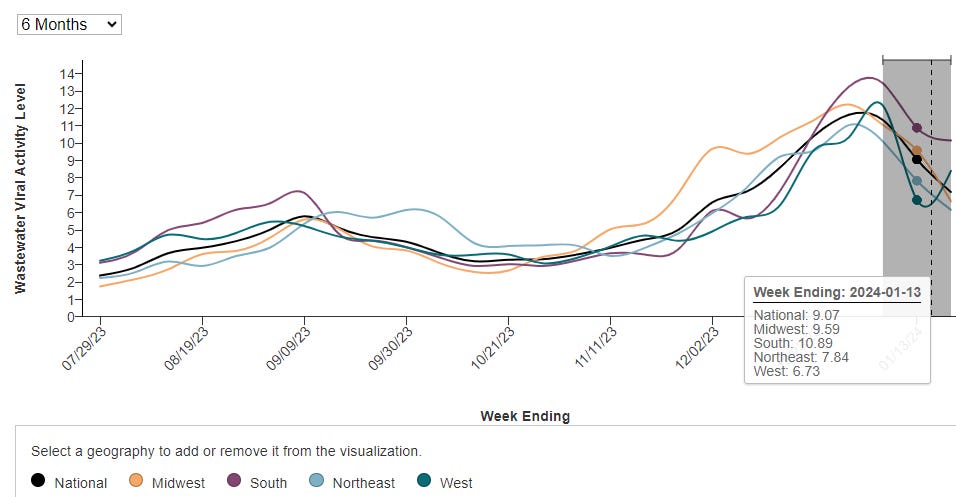


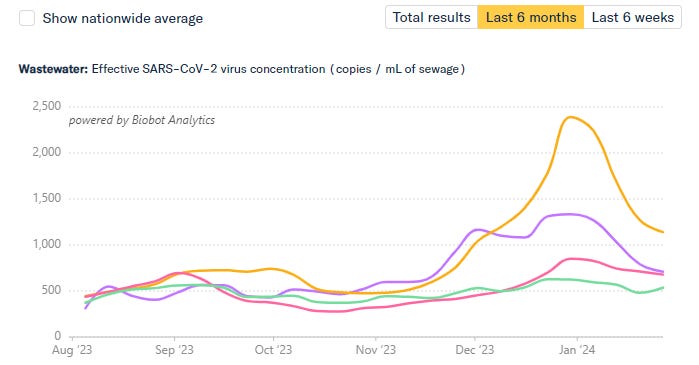




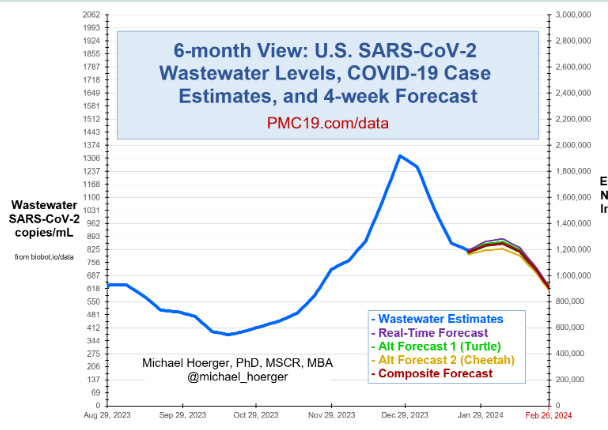















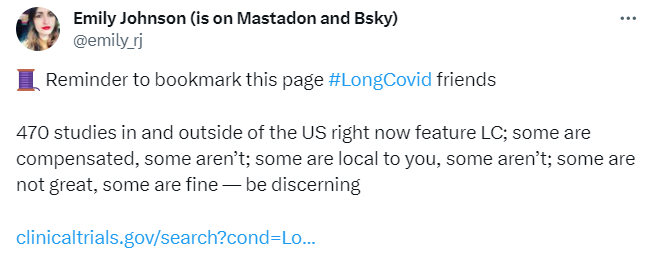


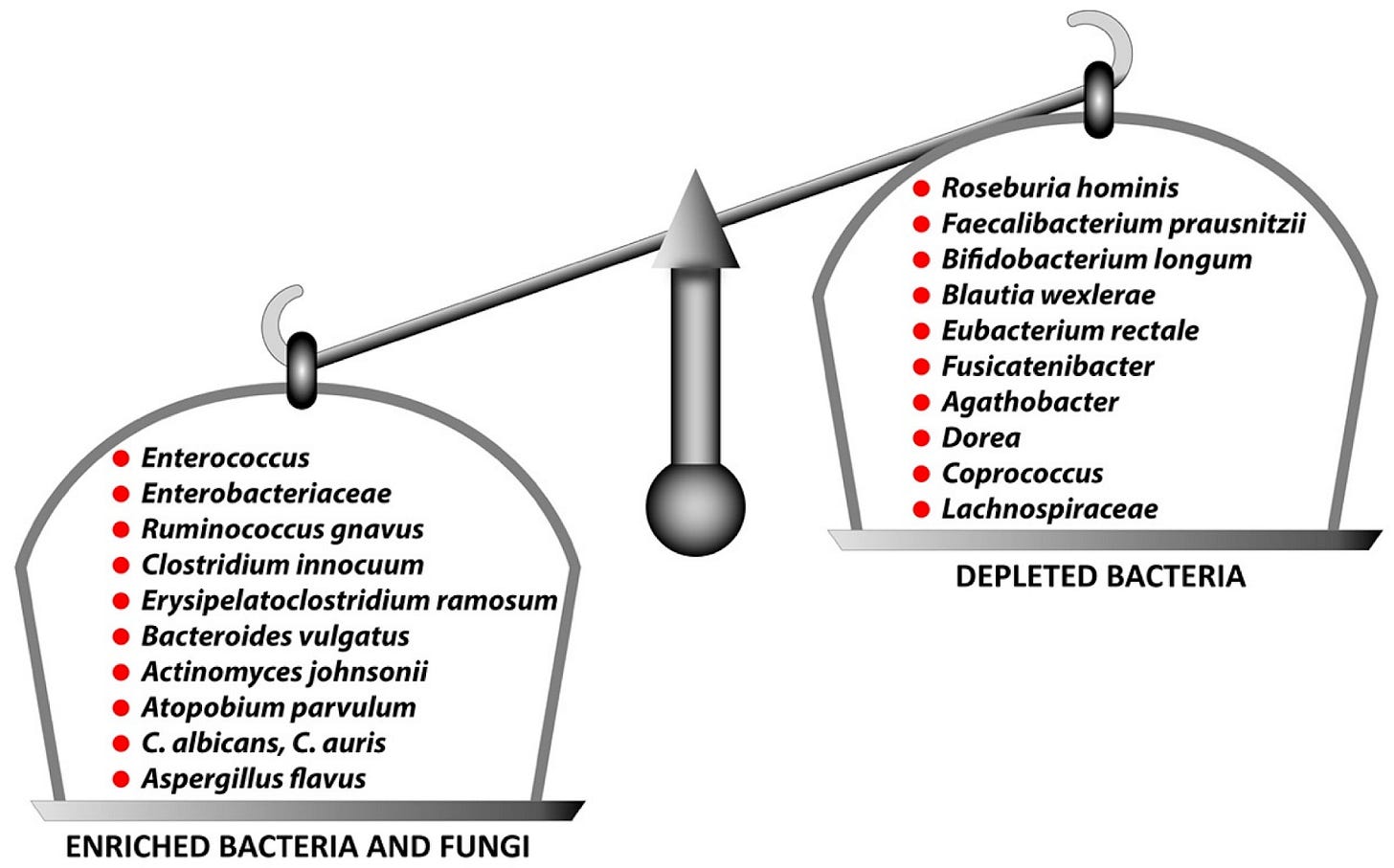
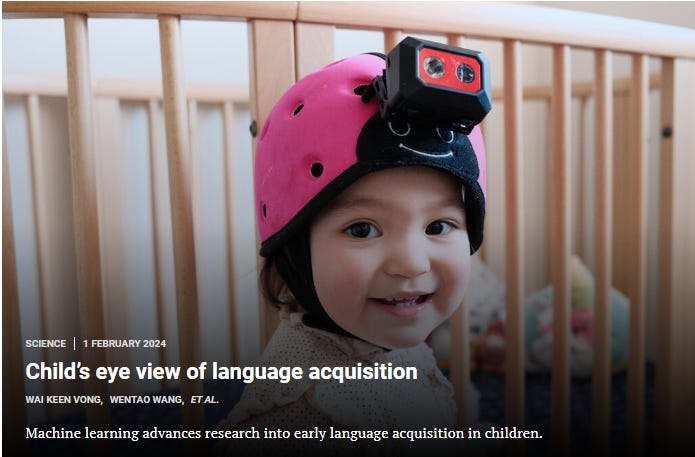








Thanks for this run down! I’m new to your stack, but have subscribed and will look forward to catching up. Love the JWST images for a quick break of awe. Now back to the hard work of keeping up with the terrestrial Covid black hole. The science of this virus is elegant and fascinating to behold… just wish it were all academic and not happening to real people, destroying lives, and driving anti-science narratives and ideologies.